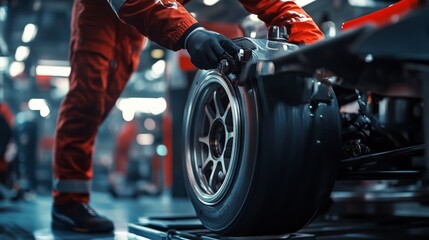Race-car drivers push the limits of high-speed driving, but safety is paramount. Advances in technology and strategy—from trackside safety structures to smart shirts that can read a driver’s heart rate and sweat —have helped raise both performance standards and protection against injuries.
Learn how racing-proven solutions can help your team optimise performance and reliability.

Helmets
A well-designed helmet is essential for high-speed racing. It must be lightweight, aerodynamically efficient, and built to withstand extreme conditions. Ferrari GT drivers in Hong Kong and other top competitors use the latest technology from leading manufacturers like Bell, Schuberth, and Arai to achieve these goals. These helmets use complex composite shells that balance strength and flexibility, absorbing and dissipating impact forces. They also include anti-fog visors and advanced ventilation systems.
The outer shell is often made of a polymer, such as carbon fiber or polycarbonate, and is designed to be tough enough to resist damage from impacts and flying debris. The inner liner is typically constructed from a foam or fabric-based polymer, such as expanded polystyrene (EPS) or expanded polypropylene (EPP). This material compresses under impact, reducing the force transferred to the driver’s head. It can also help to keep the helmet snug on the driver’s head, preventing it from shifting during a crash and improving safety.
A racing helmet is subject to strict standards set by the FIA, Snell, and DOT. FIA standards are especially rigorous, tailored for the specific needs of motorsports. The Snell standard is also rigorous but is broader in application, covering multiple disciplines like karting and motocross. DOT standards are less stringent but still provide basic protection. In addition to protecting the head, a racing helmet must be lightweight to improve performance and reduce fatigue on the neck and shoulders.
Suspension
A race car’s suspension system is vitally important, and fine-tuning it to perfection is essential if you want to achieve success on the track. This is because racing suspension systems require a balance of strength and weight to be at their best.
The key function of a vehicle’s suspension is to isolate the body of the car from the road surface, and it must be stiff enough for high-speed driving and precision cornering. Unlike cars intended for everyday use, which prioritize comfort and ride quality, race cars are designed with speed and agility in mind and therefore require very stiff suspension.
Standard suspension components that can be upgraded for motorsport use include the springs and dampers. Motorsport dampers are typically made from polyurethane, a material that has greater strength than rubber and is also resistant to wear. They can be sourced in a range of adjustment options to control the ride height, bump, and rebound – all of which have different effects on the handling.
To get the most out of your car’s suspension, it’s recommended that you work with a professional workshop. They will run suspension kinematics and compliance (K&C) simulations to determine the optimum setup for your specific vehicle. This will identify the optimum suspension geometry for your vehicle, which will help you maximise performance on all types of surfaces and conditions.
Tires
In a sport that requires acceleration, precise cornering, and stability, tires play an essential role in the synergy between driver and machine. With today’s steering and suspension setups demanding instantaneous feedback, high-performance tires are designed to interpret your every move and respond accordingly. They provide superior grip under extreme conditions and bolster stability, ensuring you can confidently drive to the limit and take on any corner.
With a wide variety of tires for motorsports available in the market, it’s important to choose the right one for your specific racing situation. Some racers may opt for slicks when the weather forecast is calling for dry surfaces, while others prefer rain tires that disperse water quickly. Additionally, tire pressure should be adjusted based on track temperatures and conditions, and tires should be regularly rotated to ensure even wear.
Regardless of the type of tire you select, it is always best to use fresh rubber on every circuit session. Doing so helps you avoid damaging the tread and preventing traction while also extending tire life.
Electronics
While a purist might believe advanced electronics detract from the essence of racing, this technology is essential to maintaining performance levels and making the sport more accessible to less experienced riders. Electronics like ride-by-wire and quick shifters allow riders to push the limits of their vehicles without losing control, and data analysis allows teams to optimize vehicle settings and fine-tune driver strategy for optimum results.
In addition, advancements in sensor technology that were developed for motorsports have made tremendous steps toward increasing passenger safety. Electronic Stability Control (ESC) and Traction Control are now standard features in most cars, and they help to maintain control during extreme movements, lowering the chance of accidents.
Moreover, these technologies are rapidly transferring to automobiles that are available to the general public, providing increased performance and efficiency without the premium price tag. Electronics found in consumer vehicles include smart features such as GPS navigation, real-time traffic updates, and predictive maintenance alerts.
This continuous transfer of innovations from the racetrack to our streets demonstrates how racing’s unrelenting pursuit of optimization influences and elevates our everyday driving experience. For example, the demands of high-speed racing prompted innovative manufacturing techniques that allowed carbon fiber to be used for production of lighter, more affordable automotive systems and components. Additionally, the needs of Formula E racing triggered the development of battery technology that has lowered the cost of zero-emission electric vehicles for the masses.